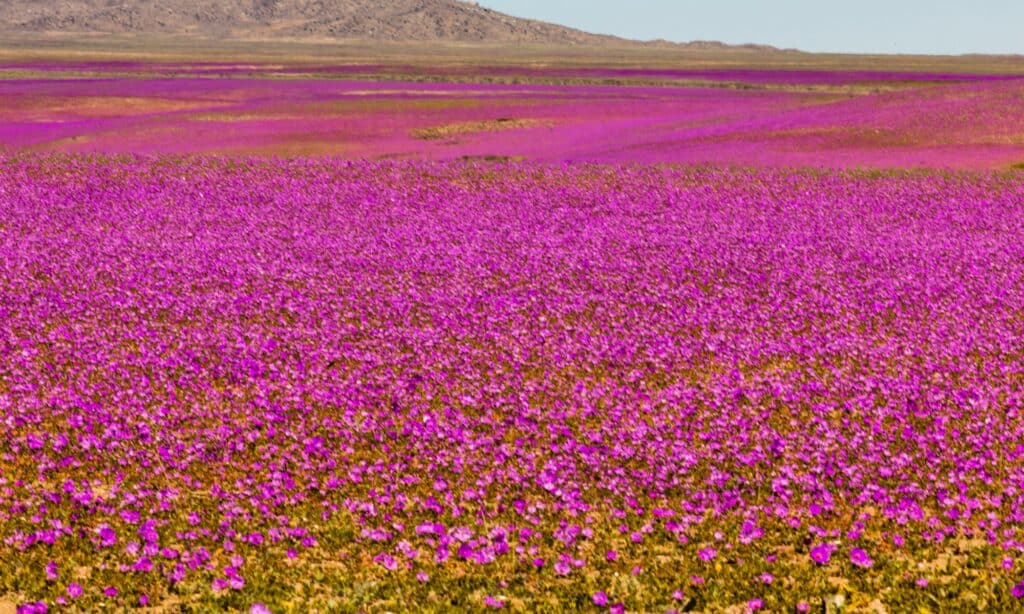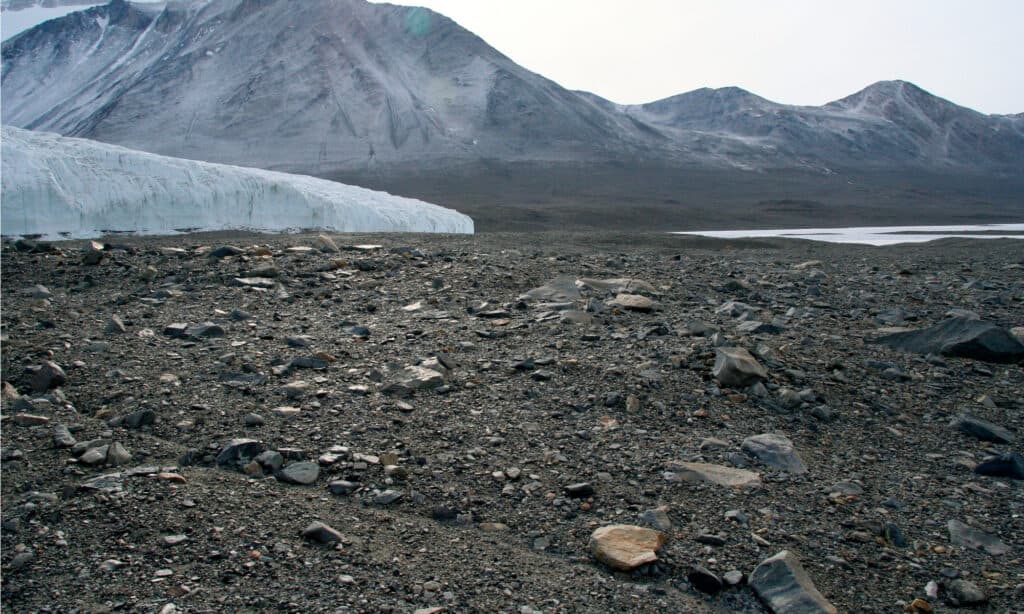The Atacama Desert holds the #2 spot for the driest place on earth, second only to Antarctica. It is the driest true desert, and it is accessible to travelers and tourists. This desert is 50 times drier than Death Valley in California, and the middle of the desert went without a single raindrop for over 500 years.
The Atacama Desert is also the oldest traditional desert on the planet. Northern Chile plays host to this desert. We don’t know how long it’s been since it had rained in the Atacama Desert because modern precipitation measurement began developing in the 16th century.
The desert sits on a plateau that’s 990 miles long, and it’s west of the Andes Mountains. It’s at an average elevation hovering above 3,500 feet. These mountains, their altitude, and weather patterns keep the desert as dry as it is.
The Atacama Desert has been dry for many millions of years. It’s postulated that it obtained hyper aridity when the Andes formed.
What are some other facts about one of the driest places on earth that we should know? We’ll discuss why the desert went 500 years without a single raindrop. We’ll also cover the polar valleys that are technically drier than the Atacama desert.
Why is the Atacama Desert So Dry?

The Atacama Desert is so dry due to specific weather patterns, ocean currents, and mountains.
©iStock.com/Eduardo Cabanas
The Atacama Desert is in a serious rain shadow. The surrounding mountains to the east and west block all of the storms that come in off of the Pacific or southwest from the Amazon. This is just one of the phenomena that keep the area so arid.
A weather phenomenon called the Pacific anticyclone blows north from the south pole. It is made of dry and cold air. The Humbolt oceanic current keeps the area from becoming humid. This creates a desert that has no rain and where water evaporates fast.
Why Did it Rain for the First Time in 500 years?

Once every decade, rain falls outside of the core and causes a flurry of flowers.
©iStock.com/abriendomundo
The event of going 500 years without a single raindrop ended in the Atacama desert core because of changing weather systems over the Pacific Ocean. These weather systems are changing in response to climate change.
The areas outside of the core of the desert receive rainfall about once every decade. When this occurs, life in these areas flourish, and a dramatic flower display rises. It lasts about a week before the area becomes its normal arid self again.
How Does Rain Hurt the Atacama Desert?
It rained for the first time in about 500 years on March 25th, 2015, in the desert core. It rained again on August 9th of the same year and on June 7th, 2017, in the core of the desert. These were the first times in 500 years it had rained in the core of the desert. A flourish of life didn’t occur. Instead, the rain devastated microbes in the extremely arid environment. These microbes are acclimated to high temperatures, osmotic stress, low nutrients, low water, and UV radiation.
When the environment that they were adapted to became saturated with water, the microbes went through so much osmotic stress that they exploded. These microbes are the only life in the core, and almost all of them died. Only four species of microbes survived in the lagoons that formed when there was 16 present before the rain.
This desert core is described as hyperarid, and it is the only part that hadn’t received rain in 500 years. The rest of the desert gets minimal rainfall at less than .03 inches.
The Atacama Desert Rain Furthers an Understanding of Mars?
When Mars lost its atmosphere, it became the waterless and cold planet that we know today. Sometime after Mars lost its atmosphere, it’s believed that cataclysmic floods swept over the planet.
The microbes in the Atacama Desert struggled with the introduction of water after evolving mechanisms to tolerate extremely dry conditions. Perhaps a catastrophic flood wiped out the remaining life on Mars in the same way; that’s if there was life on Mars at all.
This information changes how martian soil should be handled. When dirt from Mars was analyzed in the 1970s, it was put in a watery solution in an attempt to find organic materials. The surface of Mars is arider than the core of the Atacama desert, so it’s possible microbes, or their remnants were destroyed in their process.
Can I Visit the Atacama Desert?
Yes, you can visit the Atacama Desert. While the core is extreme and the entire desert is arid, some parts show signs of life. Rain occurs in other regions, so basic ecosystems are supported, and there are even some resorts in the area.
These resorts use locally sourced water from underground reserves so that the municipal supply of the nearby city isn’t compromised. Because of the special conditions in the desert, the sky is crystal clear at night, and a string of observatories exists as a response. There are tours you can book to explore what the desert has to offer.
What is the Driest Place on the Planet?

The Friis Hills in Taylor Valley haven’t received rain in 14 million years.
©ENVIROSENSE/Shutterstock.com
The McMurdo Dry Valleys in Antarctica make up the driest place on the planet. It hasn’t rained there in over 2 million years. Polar deserts are different than most of the world’s deserts, so the world’s true driest desert is the Atacama Desert in South America.
The Antarctic valleys are so extreme and inaccessible. However, it almost doesn’t count when considering which one of the driest places on earth should crown our imaginations.
Because of the shape of the mountains in the region, glacier ice headed toward the ocean is rerouted, so no water reaches this area. While the surrounding landscape is white, the Dry Valleys are bone dry with no ice or snow despite the frigid temperatures.
The driest place in this network of valleys is the Friis Hills in Taylor Valley. This area has likely not seen precipitation for 14 million years. There are frequently winds around 200 miles per hour which demolish any chance for atmospheric humidity developing.
The photo featured at the top of this post is © iStock.com/Eduardo Cabanas
Thank you for reading! Have some feedback for us? Contact the AZ Animals editorial team.






